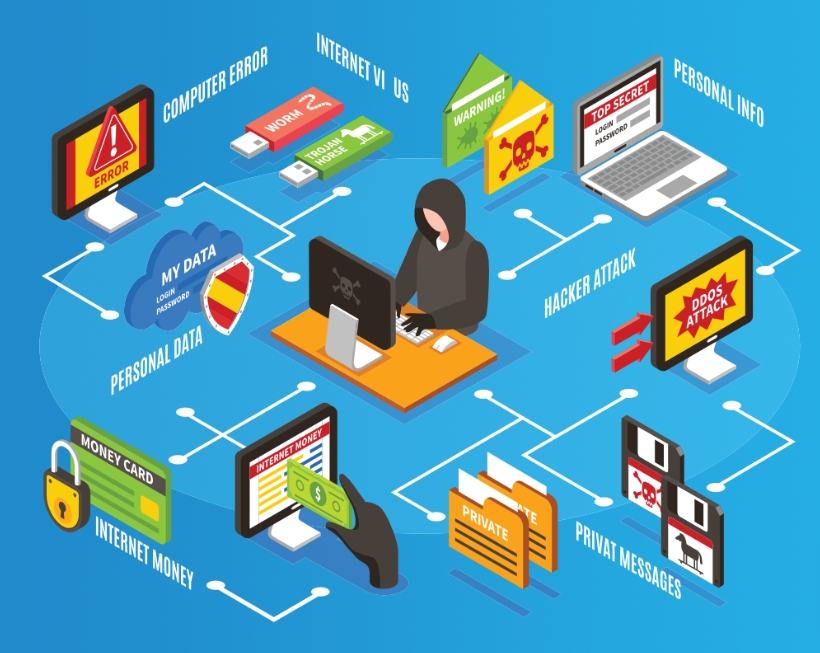Cyber threats are becoming increasingly prevalent and sophisticated, posing significant risks to businesses and individuals alike. Email is one of the primary methods used by cybercriminals to launch attacks such as phishing, malware, and ransomware, making it a critical area of focus for cybersecurity professionals. Email verification is a valuable tool that can help prevent cybersecurity threats by ensuring that only legitimate and authorized emails are delivered to users’ inboxes. In this article, we will explore how online email verification can help prevent cybersecurity threats and the steps involved in integrating email verification into your security strategy.
Understanding the Cybersecurity Threat Landscape
To effectively prevent cybersecurity threats, it’s essential to understand the landscape of potential risks. Cyber threats can come in many forms, including phishing attacks, malware, ransomware, and social engineering.
These threats can cause significant harm to businesses, including financial losses, data breaches, reputational damage, and legal liabilities. Cybercriminals are constantly developing new tactics to evade traditional security measures, making it critical to have multiple layers of protection in place.
Email as a Common Vector for Cyber Attacks
Email is one of the most common vectors for cyber attacks, with 94% of malware being delivered via email. Cybercriminals use phishing emails to trick users into divulging sensitive information, clicking on malicious links, or downloading malware-infected attachments. Email spoofing is another technique used to make an email appear to come from a legitimate source, increasing the likelihood of the user taking action.
The Importance of Email Verification in Cybersecurity
Email verification is a process that verifies the authenticity of an email address before delivering it to the recipient’s inbox. An online email verifier can help prevent email-based attacks by ensuring that only authorized emails are delivered. Email verification can also reduce the risk of email spoofing by identifying emails that are not sent from the claimed sender. It is a crucial component of any cybersecurity strategy and can be integrated into existing security protocols.
How Email Verification Works
Email verification uses various techniques to verify the authenticity of an email address, such as verifying the domain name, checking the syntax of the email address, and performing DNS checks. The email verification process begins by checking the syntax of the email address to ensure it is correctly formatted. The domain name is then verified to ensure it is registered and valid. DNS checks are performed to verify that the email server exists and is authorized to send emails on behalf of the domain. If the email address passes all verification checks, it is delivered to the recipient’s inbox.
Benefits of Email Verification for Cybersecurity
The benefits of email verification for cybersecurity are many. Firstly, it reduces the risk of phishing attacks by ensuring that only authorized emails are delivered. This helps prevent users from clicking on malicious links or downloading malware-infected attachments. Secondly, email verification reduces the risk of email spoofing by identifying emails that are not sent from the claimed sender. Finally, email verification can help businesses maintain compliance with industry regulations such as GDPR and HIPAA by ensuring the secure transfer of sensitive information.
Implementing Email Verification in Your Security Strategy
To implement email verification in your security strategy, you should begin by conducting a risk assessment to identify potential vulnerabilities. You can then select an email verification service provider that meets your needs and integrate it into your existing security protocols. It’s essential to ensure that all employees are trained on the importance of email verification and how to identify potential email-based threats.
Choosing an Email Verification Service Provider
When selecting an email verification service provider, it’s important to consider factors such as reliability, accuracy, and cost-effectiveness. Look for a provider that uses advanced verification techniques such as domain verification, syntax verification, and DNS checks. It’s also crucial to choose a provider that offers scalable solutions that can accommodate the size and needs of your organization. Consider the level of customer support offered, as well as the provider’s reputation and track record of success. Look for providers that offer a service-level agreement (SLA) that guarantees a high level of accuracy and reliability.
Best Practices for Email Verification in Cybersecurity
To maximize the benefits of email verification in your cybersecurity strategy, it’s essential to follow best practices. These include regularly updating your email verification software, ensuring that all employees are trained in email security awareness, and implementing a strict email policy that includes guidelines for handling sensitive information. It’s also important to perform regular security audits to identify and address potential vulnerabilities.
In The End
Email verification is a valuable tool that can help prevent cybersecurity threats by ensuring that only legitimate and authorized emails are delivered to users’ inboxes. With the increasing prevalence and sophistication of cyber attacks, email verification is a critical component of any cybersecurity strategy. By following best practices and choosing a reliable email verification service provider, businesses can significantly reduce the risk of cyber threats and maintain compliance with industry regulations. It’s essential to take proactive steps to protect your organization from cyber threats and stay ahead of the constantly evolving threat landscape.









